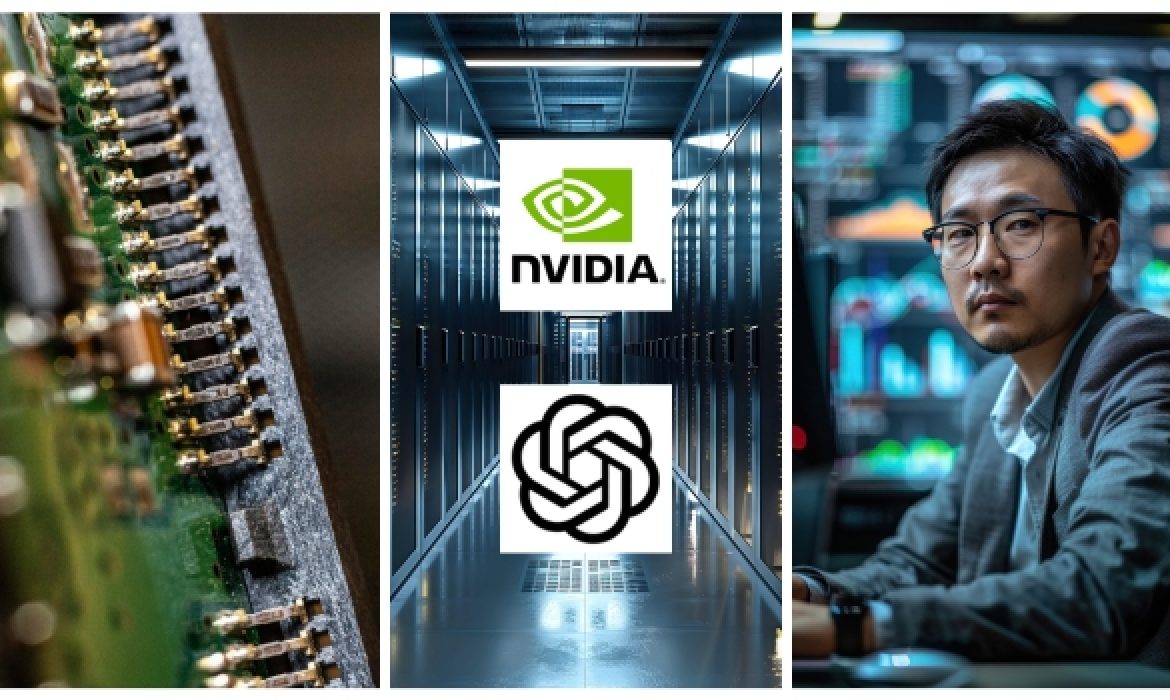
Date Issued – 20th November 2025
Courtesy of the Research Department at Balfour Capital Group
Key Points
- Nvidia OpenAI Pact Uncertainty: Nvidia flagged “no assurance” that its headline $100 billion OpenAI investment will be finalized, underscoring contract and execution risk even as both firms drive a $1.4 trillion AI infrastructure buildout.
- Singapore-Nasdaq Dual Listing: Singapore Exchange’s new dual-listing bridge with Nasdaq aims to boost liquidity and global access for large-cap issuers via a single rulebook and review, backed by MAS capital injections and incentives for local equities.
- Nvidia Earnings Beat: Nvidia shares rose after the company beat Q3 expectations and guided for ~$65 billion in next-quarter revenue, with data center sales up sharply and management signaling “sold out” cloud GPU demand and $500 billion in AI chip orders.
- Fed Split on Rate Path: Fed minutes revealed a sharp split over the October rate cut and skepticism about a December move, with “many” officials favoring no further cuts in 2025, reinforcing a more uncertain and data-dependent easing path.
Nvidia Tempers Expectations on $100bn OpenAI Pact
Nvidia reminded investors in its latest quarterly filing that there is “no assurance” it will finalize the previously announced $100 billion AI infrastructure partnership with OpenAI, underlining the difference between headline announcements and binding contracts.
The disclosure comes two months after the two companies unveiled an ambitious plan for Nvidia to fund OpenAI data centers from 2026, with an initial $10 billion tranche tied to gigawatt-scale capacity buildout.
At the same time, OpenAI has locked in a signed agreement with AMD to deploy 6 gigawatts of Instinct GPUs, including stock warrants for up to 160 million AMD shares, signaling a deliberate move to diversify chip suppliers.
While Nvidia’s management continues to describe OpenAI as a “once-in-a-generation company” and is targeting support for at least 10 gigawatts of OpenAI data centers, the caveats around the pact highlight contractual and execution risk in the AI capex cycle, even as both firms race to finance an announced $1.4 trillion in AI infrastructure spending.
Singapore-Nasdaq Dual Listing Bridge Aims to Lift SGX Competitiveness
Singapore Exchange is partnering with Nasdaq to create a “Global Listing Board” for companies above S$2 billion in market value, allowing a single set of documents and a streamlined review to support dual listings across both markets by mid-2026.
The move is part of a broader push by Singapore to boost its equity market’s appeal through deeper liquidity, round-the-clock price discovery, and access to both U.S. dollar and Singapore dollar investors.
The Monetary Authority of Singapore is complementing this with a S$30 million “Value Unlock” package to strengthen corporates’ capital markets capabilities and a S$2.85 billion mandate to local asset managers to drive participation in Singapore equities.
Equity turnover has already risen, with average daily trading volume up 16% year on year in Q3 2025 and IPOs raising over S$2 billion so far this year, though analysts caution that SGX’s lower liquidity versus Nasdaq and the need for stronger corporate action remain key constraints.
The STI’s roughly 30% gain since the 2024 equities review lags the near 60% rallies seen in Japan and South Korea following their reform pushes, underscoring both the progress made and the re-rating potential still contingent on further reforms and governance improvements.
Nvidia Extends AI Lead with Strong Quarter and Bullish Outlook
Nvidia shares climbed after the chipmaker delivered another stronger-than-expected quarter and raised its sales outlook, reinforcing confidence in the durability of the AI investment cycle.
Fiscal third-quarter revenue rose to $57.01 billion, ahead of forecasts, with adjusted earnings per share at $1.30, while net income jumped 65% year on year to $31.91 billion.
Data center revenue surged 66% to $51.2 billion, driven largely by demand for its Blackwell-based GPUs and networking products, as CEO Jensen Huang said “cloud GPUs are sold out” and highlighted $500 billion of AI chip orders for 2025–2026.
Nvidia now guides for about $65 billion in current-quarter sales, well above analyst expectations, supported by rising AI capital spending at Microsoft, Alphabet, Amazon and Meta, even as export controls and intensifying competition weigh on China sales.
Alongside double-digit growth in gaming, visualization and robotics, and $12.5 billion of share buybacks, the results signal that AI infrastructure spending remains robust, with supply constraints and geopolitical risks the main checks on an otherwise powerful earnings story.
Fed Minutes Reveal Sharp Split on Rate Path After October Cut
Minutes from the Federal Reserve’s October meeting show policymakers deeply divided over the need for further easing after approving a quarter-point cut to 3.75%–4%, casting doubt on the widely expected December move.
While several officials saw another reduction in December as appropriate if the economy evolves as they expect, “many” favored keeping rates unchanged for the rest of 2025, reflecting concern that inflation has shown “little sign” of returning sustainably to the 2% target.
The debate centers on how restrictive policy really is, with doves focused on a slowing labor market and hawks worried about undermining disinflation progress.
The split along with the impact of a 44-day government data blackout, has shifted market pricing: traders now see only about a one-in-three chance of a December cut and higher odds of action in early 2026, reinforcing the message that the Fed’s next steps are data-dependent and contested rather than on a preset easing path.
Conclusion
This week’s developments highlight a market still anchored by AI-driven capital spending but increasingly attentive to policy and execution risk.
Nvidia’s outstanding results and multi-year order book reinforce the depth of the AI infrastructure cycle, even as its proposed $100 billion pact with OpenAI underscores how headlines can outpace binding commitments.
Singapore’s dual-listing bridge with Nasdaq and fresh MAS incentives show policymakers competing to attract equity capital and liquidity.
At the same time, divided Fed minutes and fading odds of a December cut remind investors that monetary policy remains contested, keeping rates, risk premia and valuations firmly data-dependent.
Investment Insights
- AI infrastructure: Nvidia’s earnings strength and multi-year order backlog suggest the AI capex cycle remains intact; investors may focus on ecosystem beneficiaries (chips, networking, data centers) while discounting headline deal risk.
- Equity venue selection: Singapore’s dual-listing bridge with Nasdaq could improve liquidity and valuation for Asia-focused large caps; global investors should monitor SGX-listed names positioned to benefit from increased cross-border flows.
- Policy and rates: Fed divisions point to a slower, more conditional easing path; duration and rate-sensitive assets may remain volatile, favoring selective rather than broad-based yield-curve positioning.
- Risk management: Elevated policy uncertainty and execution risk argue for disciplined diversification across regions, sectors and factor exposures rather than concentrated AI or rate-cut bets.
Economic Calendar
| Date | Event | Why It Matters |
|---|---|---|
| November 21, 2025 | U.S. Michigan Consumer Sentiment (Final), U.K. & Canada Retail Sales | Key read on U.S. household confidence and major retail sectors in the U.K. and Canada, shaping views on global consumption momentum and risk appetite. |
| November 26, 2025 | U.S. Q3 GDP (Second Estimate), Durable Goods Orders, Personal Income & Spending / PCE | Combines growth, investment and the Fed’s preferred inflation gauge into one session, critical for recalibrating U.S. rate expectations and global risk premia. |
| November 27, 2025 | Japan Tokyo CPI | A key leading indicator of Japanese inflation that guides Bank of Japan policy signals and influences yen dynamics and global bond markets. |
| November 28, 2025 | German CPI & Retail Sales, Swiss GDP, Canadian GDP | Updates on eurozone core strength and Swiss/Canadian growth, important for gauging non-U.S. demand, ECB trajectory and cross-currency positioning. |
| November 30, 2025 | China Official Manufacturing & Non-Manufacturing PMIs | High-frequency snapshot of Chinese activity that sets the tone for Asian equities, commodities, and global growth sentiment into December. |
Disclaimer: This newsletter provides financial insights for informational purposes only. It does not constitute financial advice or recommendations for investment decisions.




